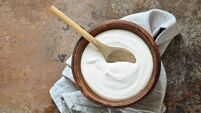Top 8: Spread the word about these butter alternatives with many benefits

Spreadables are efficient and are easy for children to use without making a mess. Picture: iStock.
Easy to spread straight from the fridge, spreadable butter and its alternatives offer many benefits.
They are less wasteful than hunks of hard butter dragged across bread, often tearing the crumb in the process.
We can grate butter or run a warm knife to soften it, but in a rush, this solution often doesn’t occur to us.
Yes, spreadables are efficient and are easy for children to use without making a mess.
But how do they taste, with or without dairy? Do they have other flavours that don’t taste like butter? And do they have less fat content, and at what cost to flavour?
Taking a look at what is widely available in supermarkets, we found that fat levels are still quite high, so we provided the total fat content for comparison.
In most cases, whipped with water, spreadables are lighter. While we have included some cholesterol-lowering samples, we are not comparing them on their efficacy, but on flavour.
Spreadables add a silkiness to hot vegetables, even when they don’t have much taste, so season accordingly.
They are not a substitute for butter or pure oils in cake and pastry making, as the added water changes the balance and texture.
Salt is a tasty 1.3% and there is an emulsifier, as expected with the high water content. Fats are 59.5%. A pleasant tasting spread. We noted that the low price reflects that this really is partly for the water – high in volume as second on the list of ingredients. Made in Ireland.
Olive oil makes up just 10% of the ingredients and is listed after rapeseed and palm oils (no mention of sustainable sources) and water.
There is also reconstituted buttermilk and emulsifiers, which make a creamy texture. There is no detectable olive oil taste, so what we got was a light, 0.94% saltiness. Fats are 59%.







